IN-DEPTH |
About 30 minutes before the 12:15 p.m. Reed Academy lunch bell, the echoes of principal Sara Strohm’s footsteps across the tile floor caused the loudest sounds in the hallway between the middle school’s gym and its cafeteria.
Strohm was showing a reporter the path that about 600 students take every day over the course of the lunch break. It’s a route that leads most Reed students through the lunch line and out into the gym, which for one period a day is annexed to serve as an additional cafeteria because the school’s lunchroom is too small.
Strohm walked by the main doors to the gym through a dim corridor toward the cafeteria, a distance of 18 rollable supersized picnic tables stood up on their sides, stowed next to one another. It’s a unit of measurement particular to Reed, one of two Springfield middle schools that would be completely rebuilt should voters support Proposition S, a school bond measure on April 4 ballots.
What is Proposition S? (Click to expand story)
On April 4, voters will decide on Proposition S, a ballot measure that will determine if the district’s current 73-cent tax levy is extended. If voters approve it, the district will issue $220 million in bonds to fund the following projects:
- Constructing a new Pipkin Middle School and a new Reed Middle School
- Renovating and rebuilding Pershing School, currently a K-8 school
- Constructing and installing storm shelters at six elementary schools and safety and security upgrades at all school facilities
See the ballot language for Proposition S on this sample ballot.
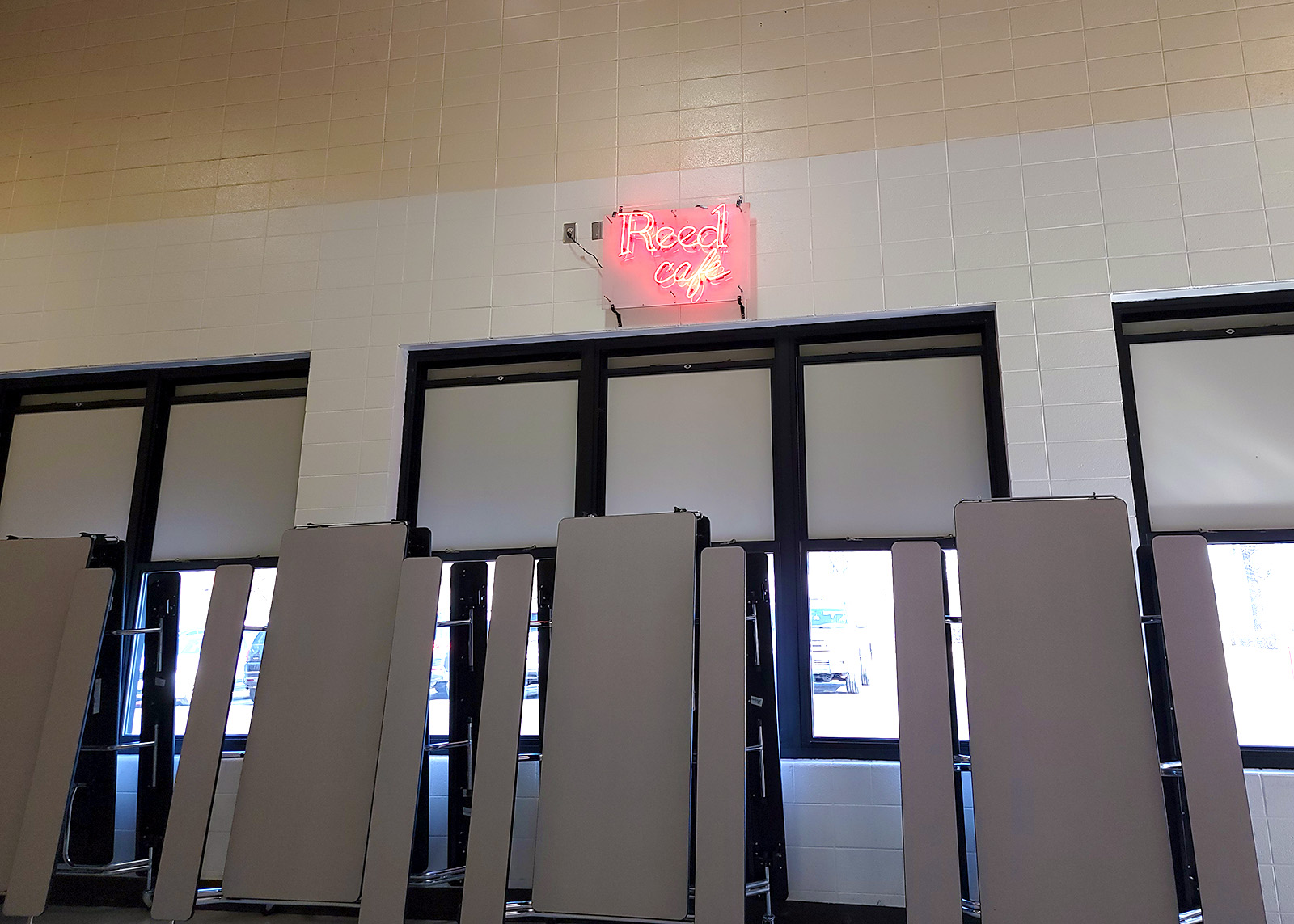
As Strohm walked past the tables, Reed staff and student council members began the daily process of wheeling each of them through the open doors of the gym. The gym is empty for exactly 40 minutes every school day, Strohm said, and it’s a pivotal 40 minutes. For one, that’s Reed’s dedicated intervention time, when educators help students master standards or skills or other areas that need attention after the pandemic era led many to experience learning loss. And it’s also when the gym gets transformed into a cafeteria.
“Welcome to the jungle,” Strohm said as staff members around her went into all-hands-on-deck mode. “We've got fun and games.”
Opened in 1923, Reed is both outdated and undersized compared to what a modern middle school should be, a task force commissioned by the SPS Board of Education declared after months of meetings. Its classrooms are small, and in some cases so small they limit the number of students who can sign up for electives like family and consumer sciences, The auditorium isn’t ADA compliant, and its stage is too compact to fit Reed’s renowned choir (or band, or orchestra) on it anyway. And, as some SPS leaders have told the Hauxeda, Reed also has perhaps the most unique and pronounced of the remaining “cafegymatorium” situations in the district.
The term came up repeatedly during task force tours of schools that were either on the short list to be rebuilt, renovated or bolstered by an addition of a storm shelter-gymnasium with funding from the second, $220 million, phase of prop S funding. The cafegymatorium’s general definition is a space in which numerous activities — P.E., performances, lunch — take place due to constraints that present themselves elsewhere on a school campus. In Reed’s case, the gym temporarily serves as a massive annex of the existing cafeteria in order to best serve the students. And then it suddenly has to be a gym again.
You have to work with what you’ve got, as Strohm said, and she and the Reed staff take deep pride in how they’ve addressed this challenge.
“The response we typically get is, ‘Wow,’” Strohm said. “And wow to the fact that we need it.”
Part NASCAR pit crew, part ballet, staff works together to give students best possible lunch environment in space not meant for it
Soon after she joined Reed as principal in 2019, Strohm led an effort to reimagine the lunch hour. It was a need-based decision, she said, one the dimensions of the century-old school forced her and her staff to examine. The Reed cafeteria, with a capacity of 187 people, was nearly or completely full throughout lunch. Over 70 percent of students at the north Springfield middle school currently qualify for free or reduced lunch, meaning few kids skip the cafeteria line. Making lunch work in the confines of the cafeteria had required an elongated fifth hour, one that was eating into classroom time.
“We had to come up with something to even out the instructional minutes in the day and keep kids from piling in there,” she said.
Enter the roller tables.

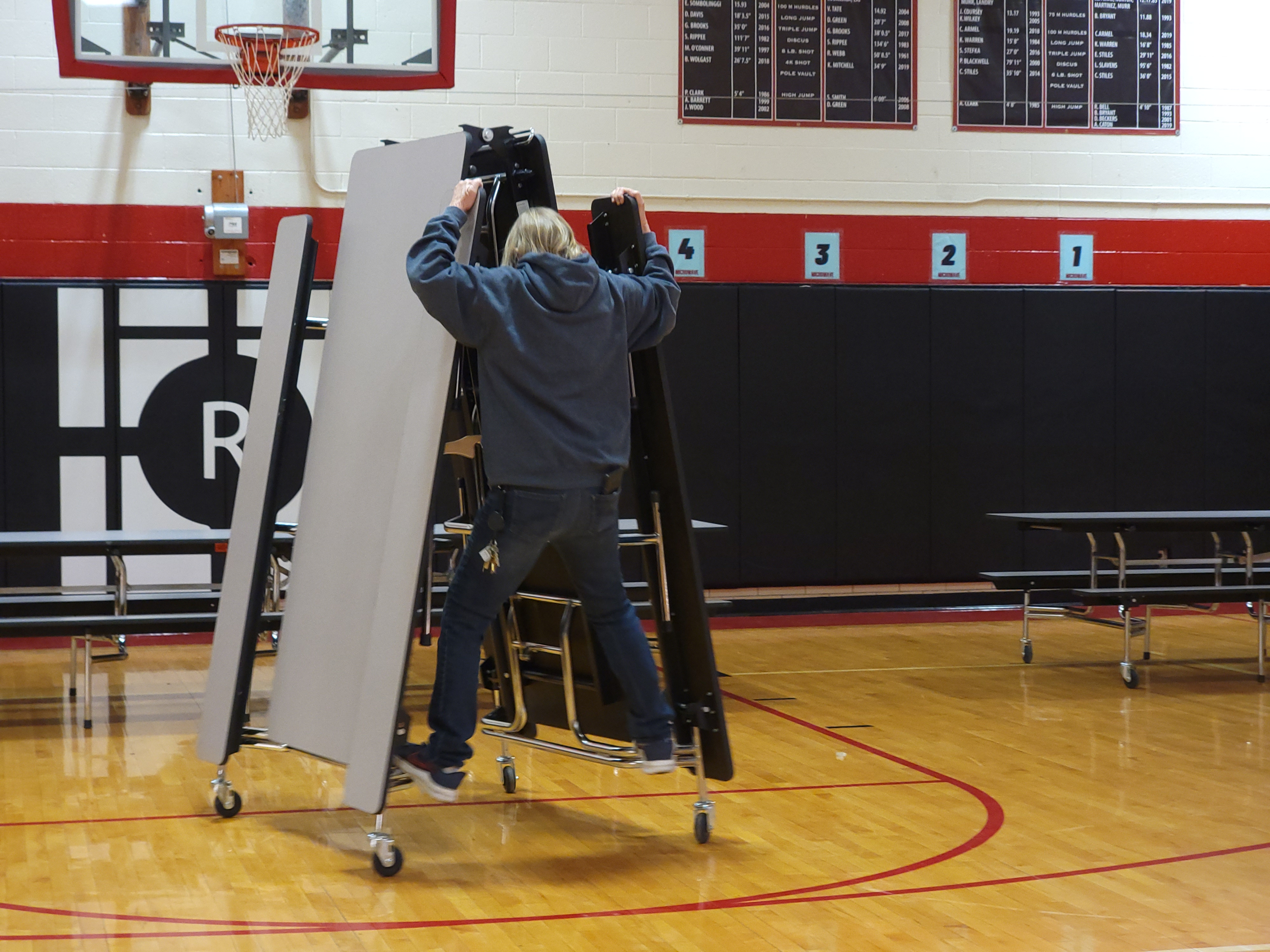
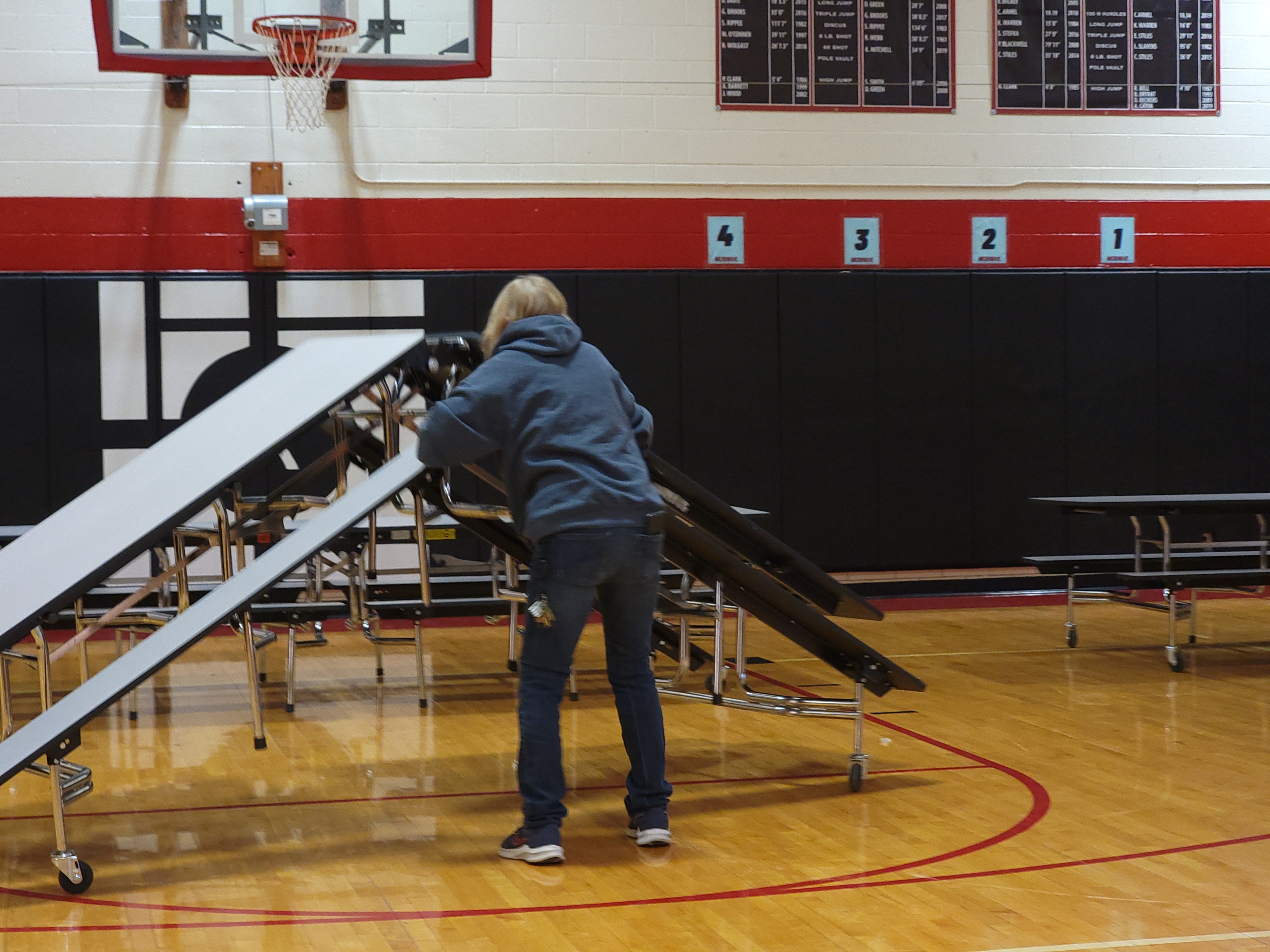
As Strohm walked through the typical lunch line process for a Reed student before they take a seat in either the cafeteria or the gym, staff members were busy setting up seating in the room where most students dine.
Eighteen classes eat in the gym compared to eight classes that sit in the cafeteria. The schedule of events is outlined on sheets of paper posted on both the cafeteria and gym walls. Starting with Ms. McCormack’s and Mrs. Keene’s fifth-period classes at 12:15 p.m., 14 sets of lunch breaks begin, each wave rolling in three minutes after the next.
“Now here’s where it gets really wild,” Strohm said. “Are you ready? Brace yourself.”
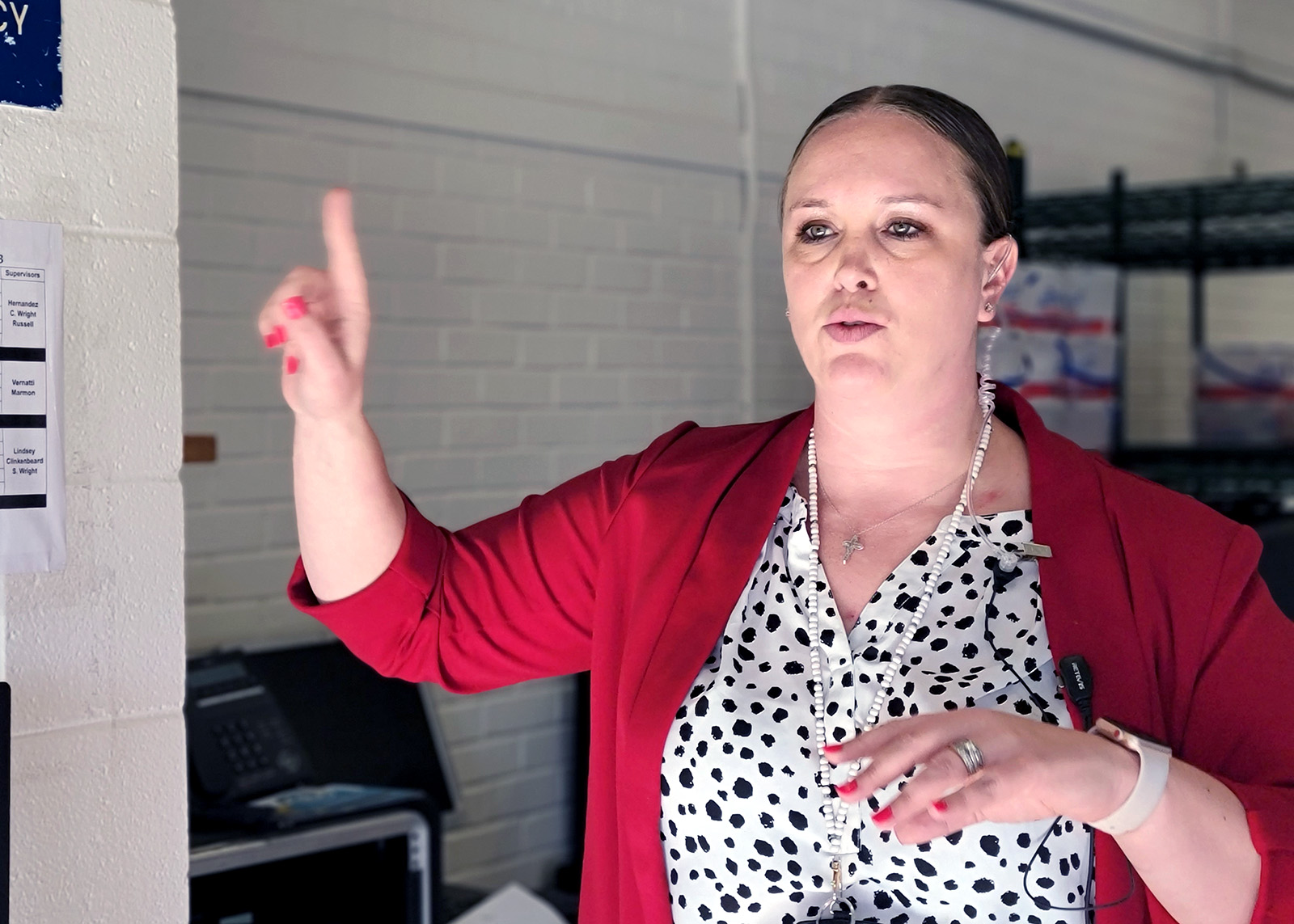
She pointed to the line on the schedule that shows when the last students finish lunch — 1:24 p.m. The next period’s P.E. class, she said, starts at 1:32 p.m.
“They have eight minutes to break this down, clean up the gym and start P.E.,” she said.
To complete the transition in time, there’s a final flurry of activity comparable to some hybrid of a NASCAR pit stop and a ballet recital.
“There's constant shuffling and shifting,” said assistant principal Courtney Ellis. “The kids have to be flexible and so do the adults. You can't have a moment of downtime, and it really does require all hands on deck, which is why we're pretty blessed here at Reed that we have such a good community. Every staff jumps in.”
‘This is my workout every day’
On Feb. 23, a stomach bug was going around Reed, Strohm said, and lunch wasn’t as packed as it normally was.
And yet a decibel measuring phone app found the gymnasium produced between 75 to 85 decibels during the height of the lunch period. It’s a noise level that aligns with the din of a running vacuum cleaner (70 db), garbage disposal (80 db) or leaf blower (80 to 85 db), and comes close to the racket of a propeller plane flying 1,000 feet overhead (88db).
It’s high energy, Strohm said, and certainly not a mental respite or reset. What she and the Reed staff have found, she said, is that students who have more support needs to regulate their behavior tend to need more support after the lunch hour in the cacophonous gym.
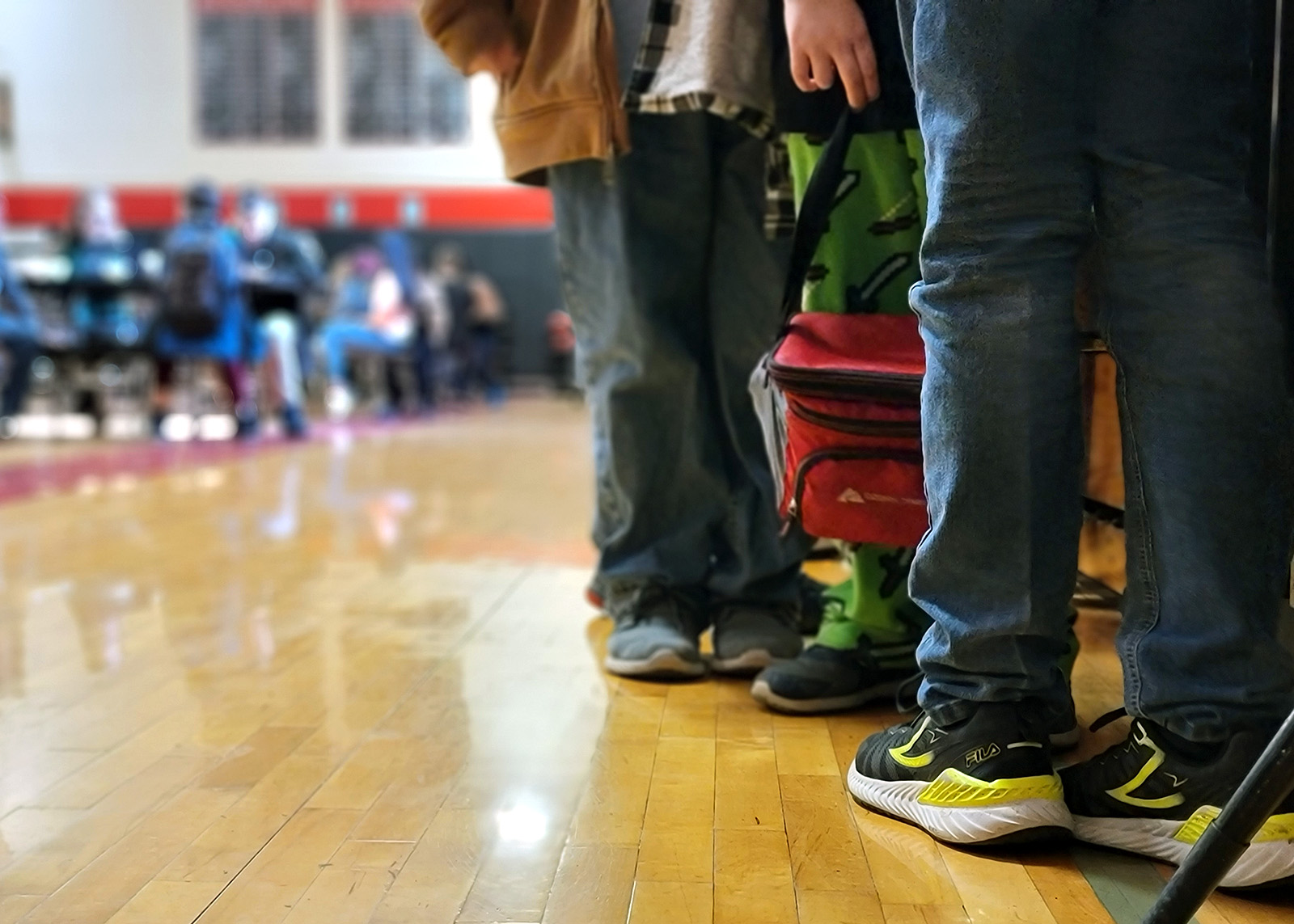
“These kids are eating in their classroom,” Strohm said. “They’re not getting that mental break. And it’s important.”
Rather than letting the predicament live rent-free in her head, she recognizes it’s an “unfortunate piece of the puzzle” and marvels at how her staff works to put it together.
To navigate the circumstances, the Reed staff built a system to make the space work for staff and students alike. A set of microwaves on roller carts flank the easternmost basketball hoop, and kids who bring lunch to school use them to heat their meals before they sit down with friends who’ve gone through the lunch line.
A cart of cleaning supplies is stationed by the bleachers. There’s a fleet of rolling garbage bins, and staff members push them from table to table, collecting plates, milk cartons and the like from students rather than having kids run to a stationary trash can to throw things away. To rise above the din, one of the lunch monitors carries a holstered, wireless microphone with them while pushing a garbage bin around the gym. Ellis had the mic for most of the Feb. 23 lunch.
During COVID, teachers assigned seats to the students, which allowed for a slightly more orderly cleanup. But Strohm said this is the only time that kids get to pick where they sit. They need unstructured elements in a day, too. But the nature of the vast environment leads the staff to tell students they get one pick and that’s it. When a student made a break for another table or shouted above the din, Ellis fired up the microphone and told them to return to base or soften their voice.
“You’re doing great,” Strohm said to Ellis, who she described as the “mastermind” of the lunch hour in the gym. “You’re doing great.”
“This is my workout every day,” she replied.
The system works, Strohm said, but it’s not how lunch should work.
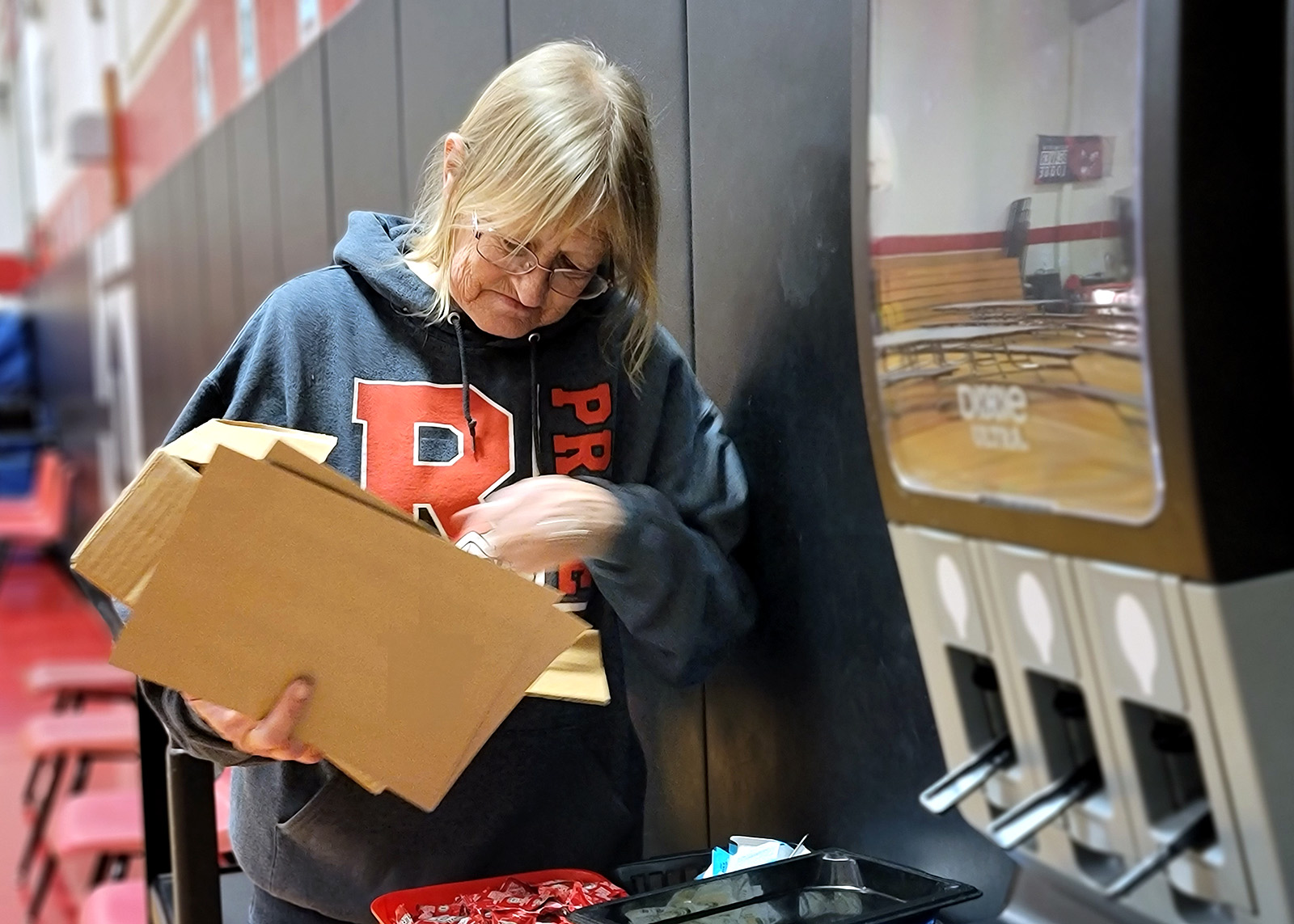
“It’s a physical stress on the staff,” she said. “There's a mental stress. If we have to have a substitute, all the administrators have to come down here and do it because there's only so many people that understand how this needs to be done. And teachers, we don't need to be training teachers (how to do it) — they need to be teaching. So there's that piece of it.
“And I think for kids too, they come in, and they're like ‘I'm eating in the gym? You don't even have a place for me to eat?' You know, they have a place to eat, but it's not adequate. And so I think that it's important that lunchtime, whether you're an adult, or your a student or whatever, is a mental break. It's supposed to be a changeover. It shouldn't be chaotic.”
Challenges help develop family environment among staff, but they also recognize it’s a time suck
Every minute counts as the changeover from lunch to P.E. nears, so once the gym population starts to drop lower than capacity, at 1:12 p.m., staff wipe down the first three empty tables, fold them back up and wheel them out.
“We’re cleaning the tables, folding them up and rolling them out while kids are still eating lunch,” Strohm said. “So that’s not ideal.”
They wheeled the tables into the gym through a set of open double doors, making sure to avoid the strike plate above the center of the doorway. Once folded, the tables are tall enough that they’ll hit it every time they’re pushed directly through the middle of the entrance. It’s been broken so many times that Strohm knows the name of the piece by heart since she’s ordered replacement strike plates more than once.
“They are not as easy to move as you think they are,” said Ellis.
When they first arrived at Reed, the parts were so stiff that it took three people to get them unfolded, head custodian Cindy Cook said. Now, she can trust teachers, administrators, staff and student council members to get them up and out of the gym. Substitutes, however, rarely get table duty due to the strike plate concern.

Cook, watching from the sidelines, swooped in to offer whatever kind of hand was needed — stacking trays, sweeping up a spill, wiping down a table. A little after 1, she made a break for the cafeteria to wipe down all the tables in there, since the last classes wrap up lunch there by 1:09 p.m. Then she raced through that and headed back to the gym to sweep up after staff members wiped down the tables that were ready to be cleared from the room.
As 1:24 p.m. neared, Ellis got on the mic to tell the remaining students to line up with their classes by the bleachers or the baseline. A class would shuffle out the door, followed by staff members rolling tables back into the corridor, followed by another class, followed by more tables.
“If we waited till they were all out of here, we wouldn't get them out,” said PE instructor Jeff Lindsey. And if everyone didn’t work together, he said, it wouldn’t get done in time.
The afternoon gym lesson was quadrant ball, a game with elements of tag and capture-the-flag that Lindsey said lets the students work as a team and get to run around a bit in the process. The gym was ready for that a few minutes before his 1:32 class began, in part thanks to his work wiping tabletops. But that afternoon, Lindsey would have to properly scrub the floor before a Reed basketball game tipped off.

A gym dedicated to PE and athletics, the 26-year Reed vet said, would allow him and others to put their time and effort elsewhere. Strohm agreed.
“Time and humans are our most important and valuable resources,” Strohm said. “And this is both a time suck and human resources suck. I’ve got people (at Reed) who work with kids to regulate them and get them back in class, but they’re down here helping with this so they can eat lunch. I have administrators down here helping clean up rather than being in classrooms to do observations and supporting (educators' needs). It’s a time suck, and that’s the challenge.”
Last July, during a task force visit to Reed, Strohm was direct when asked what she hoped would happen after community members assessed facilities across the school district most in need of attention.
“I hope I get a new building,” Strohm said. “The kids deserve it.”
If Proposition S passes, the new Reed project is estimated to be the most expensive project tied to the $220 bond proposal, at an estimated cost of just under $59.5 million. A new Reed would increase the school’s space by almost 40,000 square feet, according to SPS design documents. That would mean the gym is the gym. Strohm said that would be game-changing.
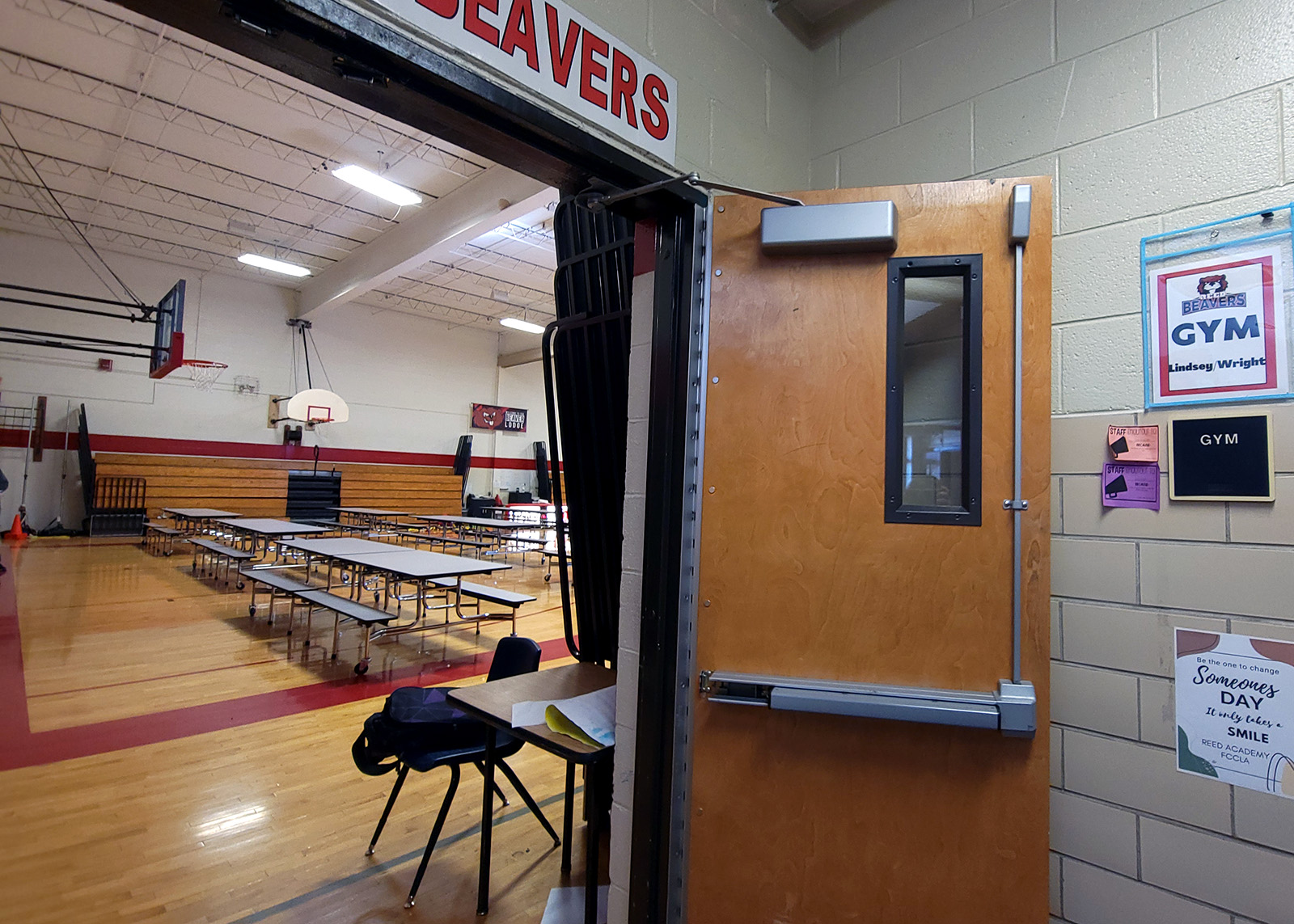
“Right now, I’m taking an entire block out of the day where kids can’t use this as a classroom,” she said in the gym. “It is a classroom — let’s not forget. It’s a state-required course every year for students in middle school. So instructional time, it would allow us more flexibility with that. And especially as we transition to a fine and performing arts school, having spaces like this for dance and other performing arts pieces is important.”
As much as it would reshape the school, she said it would reshape the middle of the day for everyone at Reed.
“I think it is also a testament to the commitment of our staff that they’re willing to do whatever it takes to make sure our kids have the best they could have,” Strohm said. “And I think that that’s really important.”
Want to learn more about Prop S?
Read some of the latest Daily Citizen coverage on Proposition S, and the bond issue that preceded it, here:
- Group of public school supporters forms to urge voters to vote #YESonS
- ‘You’ve got the boujee high school’: Springfield’s northside celebrates renovated Hillcrest High School
- Voters will have final say on $220 million Springfield school bond issue
- ‘Just a shelter’ on the outside, transformative space for schools on the inside
- As $220M school bond issue advances, district backs pause on elementary school projects


